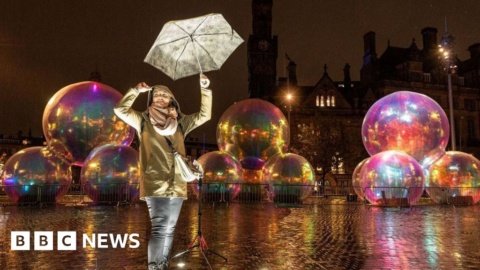Henry Moore’s “Reclining Figure Bone” sculpture slopes down like the curves of a body or rolling hills. Two smooth openings peer into Georgia O’Keeffe’s “Pelvis IV” painting — a soft blue sky with a full moon as seen through the socket of a small pelvic bone — in the final gallery of the artists’ shared exhibition at the Museum of Fine Arts, Boston.
The display mimics how Moore and O’Keeffe saw the world, gazing through animal bones and other found natural objects to unlock new perspectives on their environments. Although the late English sculptor and American painter never met, their works draw deep parallels within abstraction rooted in nature.
The exhibit “Georgia O’Keeffe and Henry Moore” runs at the MFA through Jan. 20 with 90 works by Moore, 60 by O’Keeffe, recreations of their studio spaces and art by other mid-20th century abstract artists from the museum’s collection.
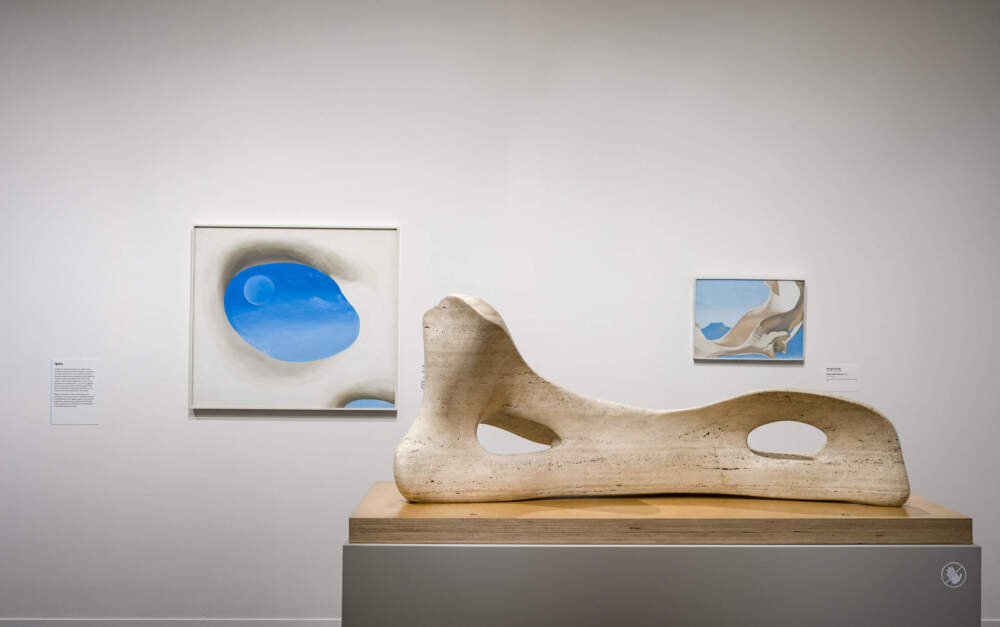
Recognized as “the mother of American modernism,” O’Keeffe is known for her paintings of flowers and desert landscapes in New Mexico. Moore developed sculptures blurring the lines between human and natural forms, often focusing on mother and child relationships.
Before co-curators Erica Hirshler and Courtney Harris were entrusted with adapting the exhibition for Boston, the concept began in 2015 with Anita Feldman, deputy director for curatorial affairs at the San Diego Museum of Art.
Feldman was formerly the head of collections and exhibitions at the Henry Moore Foundation in England for 18 years. After starting at SDMA, she was invited to visit O’Keeffe’s studios at Ghost Ranch and Abiquiú, New Mexico.
“I was really taken by seeing her studios and all of the objects that she collected, and I kept thinking, ‘Oh, Henry Moore would have loved the curve of that bone or the coil of that seashell or the texture of that driftwood,’” she said. “He collected really similar objects.”
She worked with the Georgia O’Keeffe Museum and the Henry Moore Foundation to develop the first-ever conversation between their works at SDMA in May 2023. The exhibition has been through Albuquerque and Montreal before opening at the MFA on Oct. 13.
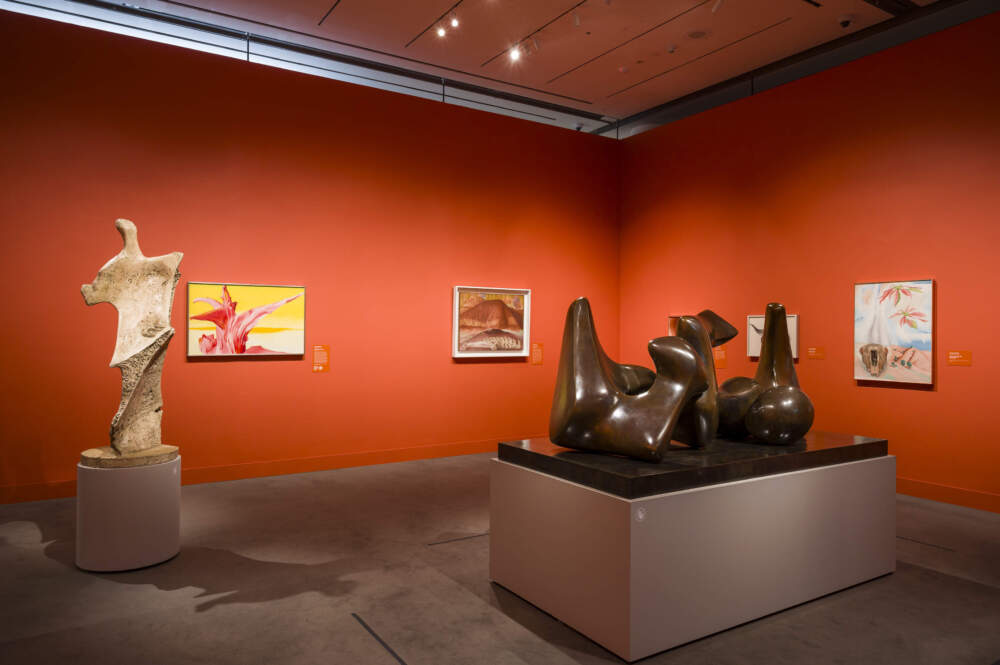
Walking through the exhibition doors, visitors are abruptly greeted with bright orange walls. O’Keeffe’s “Red Tree, Yellow Sky,” showcasing vibrant hues illuminating the American Southwest, hangs on the far wall. Moore’s “Working Model for Standing Figure: Knife Edge” stands to the left of the painting, evoking similar sharp lines like tree branches.
“In the other venues, the show was organized around subject matter, and we’ve decided to use more visual clues to bring Moore and O’Keeffe into conversation,” Hirshler said, “visual clues like how they dealt with issues of balance, with issues of negative space, with issues of showing things at different scales.”
Harris and Hirshler introduce the artists together, then move into individual explorations of their processes and bring them back again.
“We wanted to have some star objects at the very beginning of the exhibition, so people could see the relationship between them and really begin to wonder about how they both used natural forms to come up with different approaches to abstraction,” said Hirshler. “That raises the question in the first gallery, and then we seek to explain it as you go through.”
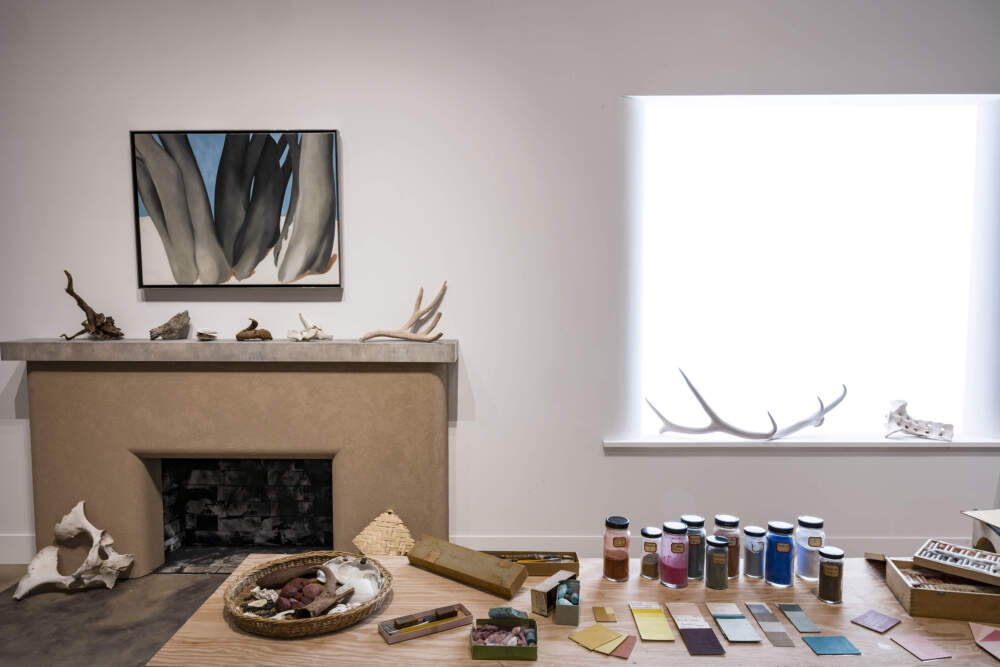
Along with their works, the exhibition includes recreations of the artists’ workspaces. O’Keeffe’s Ghost Ranch studio is neat and tidy, every object has a specific place. Moore’s studio at Perry Green is less structured with paint splattered on the floor and miscellaneous found objects scattered across shelving. Each studio re-creation includes actual pieces from their studios, from Moore’s driftwood goat head to an unfinished painting by O’Keeffe.
“I think it’s wonderful to remember that these are made objects and that somebody’s hands were on them, and I think having the artists’ studios really brings their vision, their presence, their practice, their hands into the conversation,” said Hirshler. “To have the humanity that the artist’s studio brings to the equation is really something special.”
Feldman added that O’Keeffe was very meticulous in her practice, mixing colors before they hit the canvas for shadows and gradients. Contrarily, Moore would “embrace the accident” and work with the movement of dripping paint.
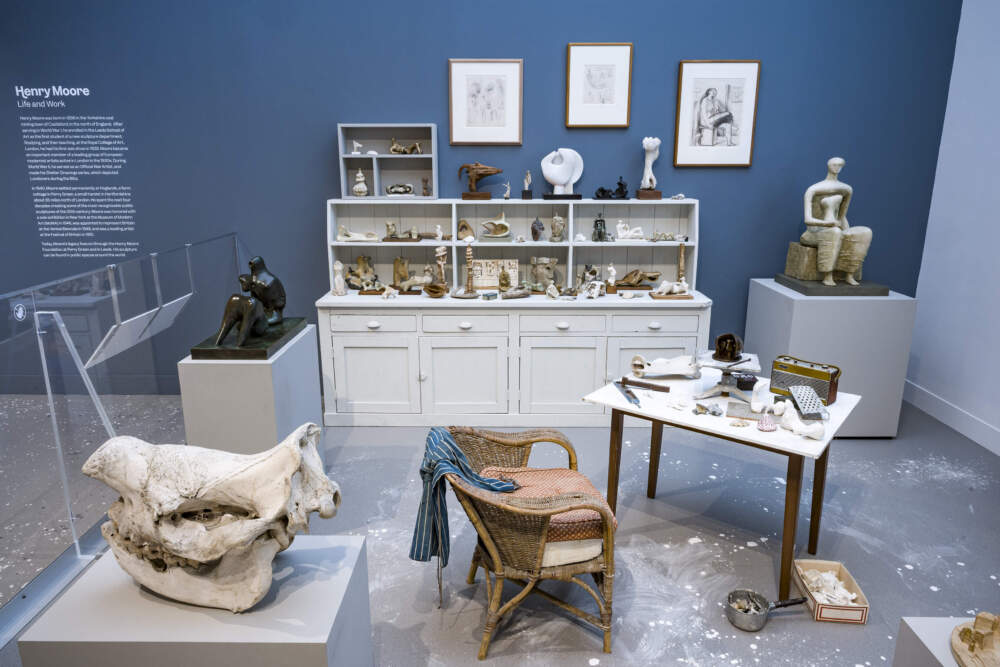
The curator explained that before the artists died, O’Keeffe and Moore both had solo exhibitions at the Museum of Modern Art in New York in 1946 — O’Keeffe’s exhibition was the museum’s first retrospective of a woman artist. Feldman wondered whether it was a happy coincidence or something more.
“It shows that modernism doesn’t have to be something cold or elitist,” said Feldman. “It can be really founded in humanism and this very special relationship that we have to the world around us that … we can walk on the beach and pick up a pebble or a seashell, and feel a connection to that form.”

